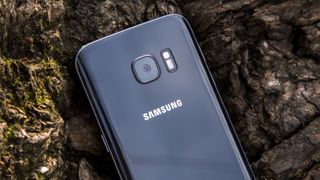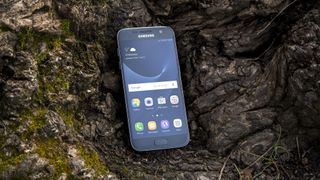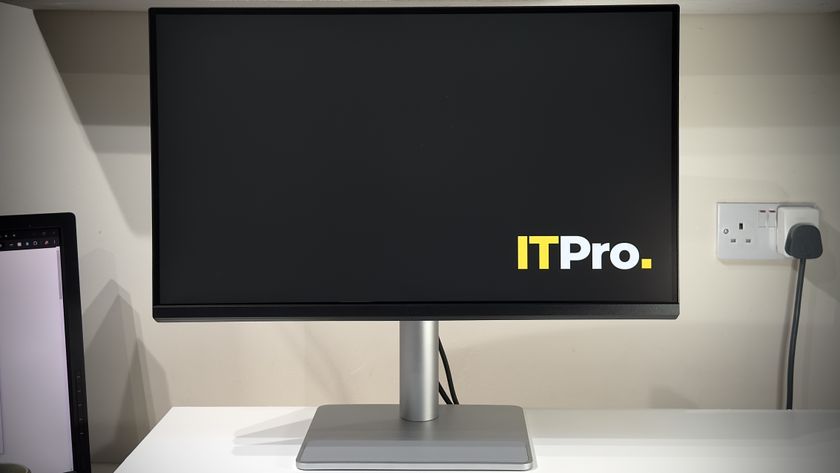Camera
The rear camera in the S7 has come a long, long way from the frankly mediocre cameras of the first few generations of Galaxy S phones. Although it only' has a 12-megapixel sensor compared to the 16 megapixels of the S6, shots are still more than detailed enough for most purposes.
Plus, the bigger pixels and the very wide f1.7 aperture of the lens make for excellent low light photography. The wide aperture lets in a lot of light, although it can also result in a very shallow depth of field. If you want to manually control the aperture to compensate for this then you'll need a third party camera app, as Samsung's default camera app doesn't have manual aperture control.
Landscapes in bright sunshine and portraits indoors under harsh fluorescent lights looked great, with none of the overly aggressive sharpening that has spoiled previous Galaxy S cameras (and indeed cameras on many other Android smartphones). Autofocus was sometimes a bit soft, but always very fast, and this was the only flaw in a sterling camera. The S7 has now been surpassed by the likes of the S8 and the Google Pixel 2, but it remains an excellent camera for day-to-day use.
Performance and battery life
S7 phones in some foreign markets use a quad core Qualcomm Snapdragon 820, but UK units have an eight-core Exynos 8890 instead. Four cores run at 2.6GHz for strenuous tasks, while the other four run at 1.6GHz and only kick in for less demanding tasks to save battery life. It should come as no surprise that it topped the charts in our benchmarks, closely matching the performance of a prototype 820 seen by our sister title Expert Reviews and edging ahead of the A9 dual core processor in the iPhone 6s.

Samsung claims that the S7 has been outfitted with a water-cooling system to keep excess processor heat under control. Samsung hasn't gone into great detail about how it works, but it does seem to be effective. The phone only became uncomfortably warm when we pushed it very heavily, such as gaming for prolonged periods or when used to drive a VR headset.
Battery life was something of a mixed bag. The battery fared very well in our video playback test, lasting just under 18 hours which is a superlative score and still up there with some of the most impressive devices we've tested. However, when connected to O2's 3G network and used in central London for calls, photography, GPS and web browsing, it lasted just over 23 hours. When browsing the web while connected to WiFi and playing MP3s, it lasted just under nine and a half hours these are more mundane scores little different from any other phone. Overall, it's much like any other phone of its size it's likely you'll need to charge it every night.
S7 vs S7 Edge
This year the differences between the standard' model and Samsung's Edge model go beyond just a curved screen. With its rounded edges, the S7 Edge can display shortcuts, notifications and snippets from third-party apps. These notifications still have little practical use, but there's potential for something to happen.
The S7 Edge is also 0.4in larger than the S7, which is 5.1in. Resolution-wise, the two phones are the same, though the curved sides of the S7 Edge do make it susceptible to reflections and some contrast issues.
When it comes to the processor, camera and battery, both phones feature the same components and offer outstanding performance and features. At the time of publication, the S7 Edge is still an additional 70 more than the S7, and really is not functionally different. However, if its curved-screens and larger size appeal to you and you have money to spare, it is an even classier alternative to the already stylish S7.
Verdict
The Galaxy S7 is an excellent phone, even after all this time. However, it's not quite the stand-out it once was. The competition has moved on significantly, and the S7 has been surpassed by better and cheaper devices. The Oneplus 5T, for example, offers an edge-to-edge display coupled with better battery life and performance - and that's almost 100 cheaper than what Samsung is charging for the S7.

Similarly, the Galaxy S8 blows its predecessor out of the water in almost every regard. Although it's still an excellent and highly capable phone, there's simply no reason to blow this much money on a phone when its rivals are this impressive. Either splash a little extra on the Galaxy S8, or save your money and go for the OnePlus 5T.
This review was originally published on 18/3/2016 and has since been updated, most recently on 13/12/2017.
Verdict
Although the Samsung Galaxy S7 is still an outstanding phone on its own merits, cheaper and more impressive competitors like the OnePlus 5T leave it in the shade.
| Processor | Octa-core 2.6GHz Samsung Exynos 8890 |
| Screen size | 5.1in |
| Screen resolution | 2,560x1,440 |
| Rear camera | 12 megapixels |
| Storage (free) | 32GB (24.8GB) |
| Wireless data | 3G, 4G |
| Size | 142x70x7.9mm |
| Weight | 152g |
| Operating system | Android 6.0.1 |
| Warranty | One year RTB |
| Details | www.samsung.com/uk |
| Part code | SM-G930F |
Adam Shepherd has been a technology journalist since 2015, covering everything from cloud storage and security, to smartphones and servers. Over the course of his career, he’s seen the spread of 5G, the growing ubiquity of wireless devices, and the start of the connected revolution. He’s also been to more trade shows and technology conferences than he cares to count.
Adam is an avid follower of the latest hardware innovations, and he is never happier than when tinkering with complex network configurations, or exploring a new Linux distro. He was also previously a co-host on the ITPro Podcast, where he was often found ranting about his love of strange gadgets, his disdain for Windows Mobile, and everything in between.
You can find Adam tweeting about enterprise technology (or more often bad jokes) @AdamShepherUK.













